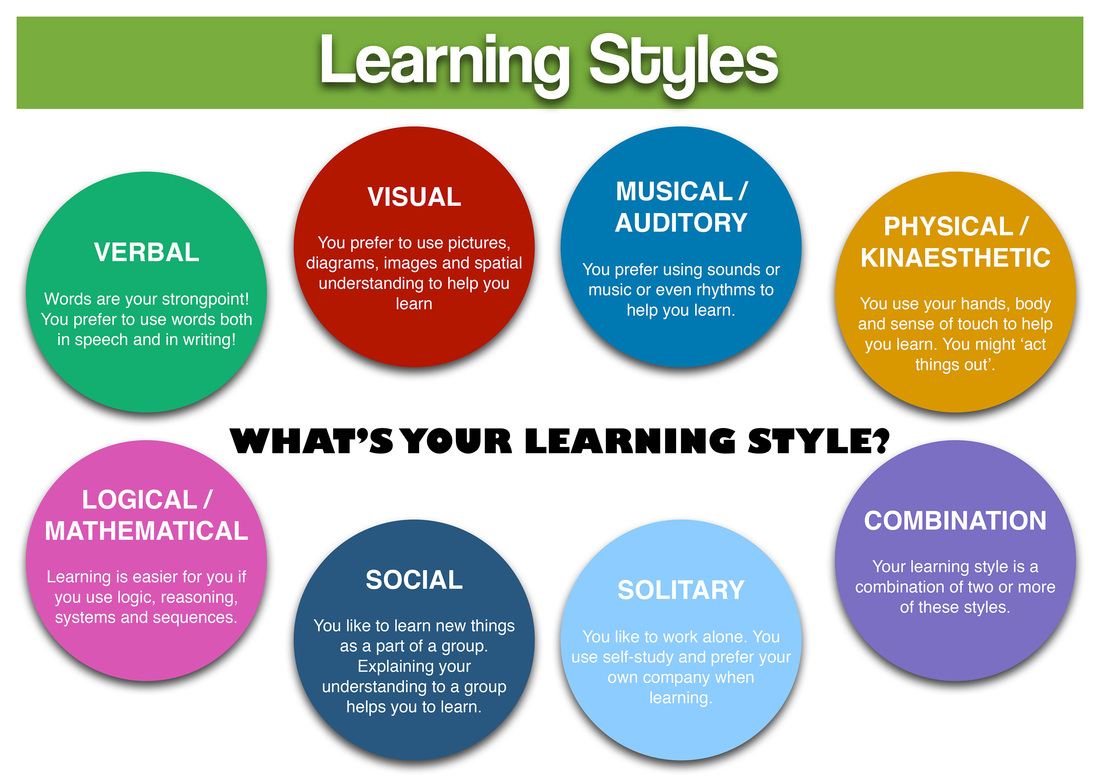 The goal of school is learning. The challenge for our schools is to help all students to learn when students are so different. Some prefer to work by themselves. Others need to bounce ideas off of their peers. Some need only to hear the information while others need to actively "do" something to help them to learn.
The goal of school is learning. The challenge for our schools is to help all students to learn when students are so different. Some prefer to work by themselves. Others need to bounce ideas off of their peers. Some need only to hear the information while others need to actively "do" something to help them to learn.The mystery of how students learn has baffled educators for a long time. The puzzle of "some-kids-get-it" and "some-kids-don't-get-it" has been difficult to understand. I think that--for a long time--teachers referred to their own ability to learn (and perhaps that of their peers) and felt that all students probably learned the same way they did. In fact, I wonder sometimes if some present day teachers use the same technique. And while there are still many unknowns in the field of learning, it is fair to say that we know more today about how students learn than at any time in our history.
For starters, brain research has provided a wealth of information about how we learn. Here's a short list of things to know about how the brain learns:
- We receive information better when it's visual.
- We remember the big picture better than the details.
- Sleep affects learning and memory.
- Less sleep reduces your ability to learn new information.
- We learn best by teaching others.
Next, we have a lot of help in the field of learning from experts and practitioners. After a while, we begin to see common themes in the area of helping students to learn:
- Engagement - Students who actively participate in their learning find it enjoyable and are better able to retain the information.
- Movement - Learning can certainly take place while sitting, but less so if you're forced to stay seated for a long time. (see The Power of Movement in Teaching and Learning)
- Challenge - We learn best when we are forced to think and try and fail and try again. Also, when we are forced to recall past learning and use that information to understand the current learning.
- Growth Mindset - If we believe that effort yields results then we are more likely to do our best to preserve in the face of any struggles that may occur as we learn new material.
 Still, teaching is certainly a combination of Art and Science. Teaching requires building positive relationships so that we can understand our students and construct our lessons in a way that meets their learning needs. Teaching requires the ability to motivate students and to spark their interest in learning. Teachers need to challenge students enough to keep it interesting, but not too much so that it becomes too overwhelming.
Still, teaching is certainly a combination of Art and Science. Teaching requires building positive relationships so that we can understand our students and construct our lessons in a way that meets their learning needs. Teaching requires the ability to motivate students and to spark their interest in learning. Teachers need to challenge students enough to keep it interesting, but not too much so that it becomes too overwhelming.
The challenge of teaching is the challenge of learning how students learn. We're getting better at this, but we still have a lot to learn [!].


No comments:
Post a Comment